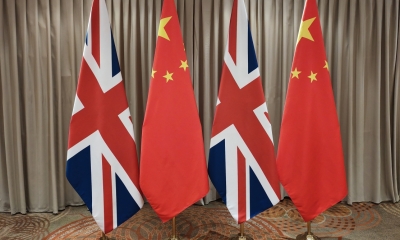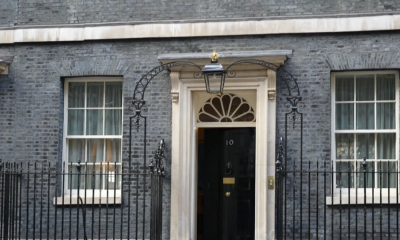Protection or Profit? The Battle for China’s Grasslands
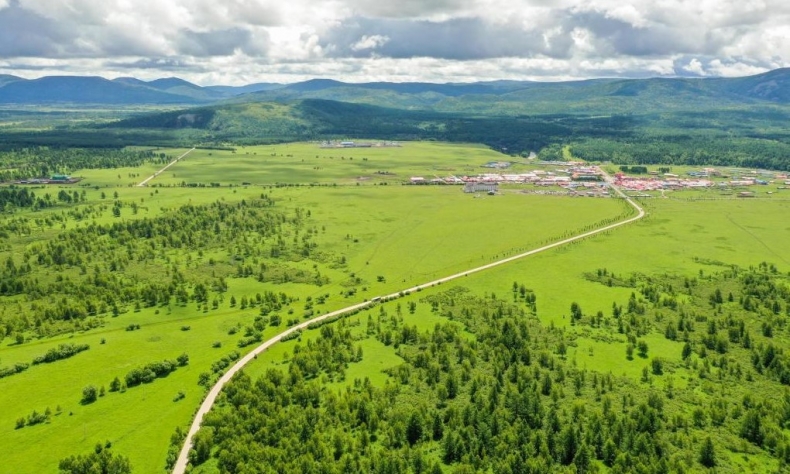
Inner Mongolia is unique in China, given that both its development and protection deeply affect not only those living inside the region, but also those outside of it.
“Inner Mongolia’s grasslands are an area of significant economic importance for locals and a barrier to destructive weather for the rest of China, and as such are a significant challenge that regional and national governments must manage.”
In the summer months China’s natural landscape turns even richer and more beautiful, with none more so than the northern region of Inner Mongolia.
While Suzhou, Hangzhou and Tibet may take the plaudits as “Heaven on Earth” or the “Gateway to Heaven” in Chinese folklore, Inner Mongolia’s crisp blue skies, rich green grasslands and fluffy white clouds make it an area of increasingly similar heavenly beauty.
The grasslands, located around the region’s 49 banners, or counties, are at their most beautiful during the summer, with the luscious green grass perfectly dotted with fresh fragrant wild flowers. Covering almost 45 percent of Inner Mongolia and making up almost 16.8 percent of China’s grasslands, they are the life and soul of the region, providing employment and a home to thousands of local herders and animals alike.
Yet their importance extends far from just inside these banners. For the big northern cities of Beijing, Tianjin and Shijiazhuang, these grasslands are not just home to the most succulent cuts of beef, lamb and goat in the country, but are also a last line of defence against devastating sandstorms that batter these cities every year.
Their dual-purpose represents a significant conundrum for both regional and national governments as they look at how best to manage these vast areas of green, with actors pulling them for both better environmental protection and greater economic development.
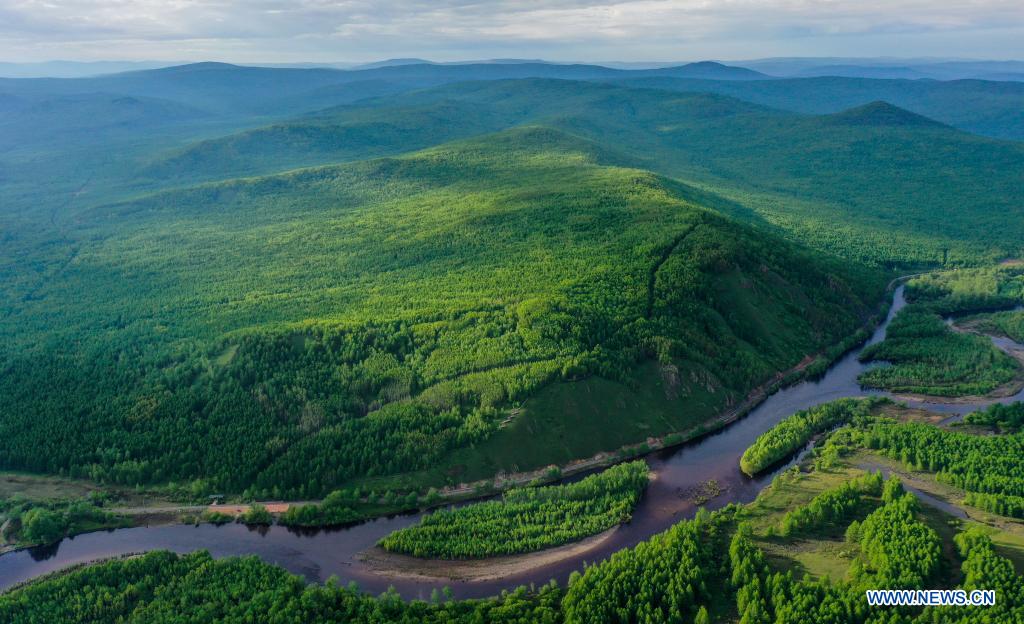
Environmental vs. development
On the one hand, Inner Mongolia’s importance as an ecological barrier to China’s surrounding big cities is undisputed.
The sandstorms that hit them earlier this year, engulfing them in a toxic cloud of orange and yellow dust, were a poignant reminder of the need to protect the China’s green sand barriers, given their importance in helping bind the ground and stopping strong winds from picking up loose sand. Greater farming or building on these lands would further compound to the severity of these yearly sandstorms, according to scientists, who are keen to see the grasslands preserved in the entirety.
Yet on the other, Inner Mongolia is an area in desperate need of investment and development. The region’s GDP ranked 22 out of 31 mainland provinces in 2020, as well as the second slowest growth rate of any Chinese province last year, according to government statistics. Although its per capita GDP ranked 11th in the country, at 68,357 yuan, twice that of Gansu, the lowest province, it is still largely resources-based. Having only recently rid the area of absolute poverty, the country is now moving towards a new phase of development – known as rural revitalization – and to do that requires significant investment in all parts of the region, including the grasslands.
Striking a balance
It is a problem Yu Zhuang, Director of Forestry and Grasslands Bureau in Zhenglan Banner, is greatly familiar with, having been entrusted to find a suitable balance to this problem in his local area.
“We must find a balance between livestock and the grasslands,” Yu says, standing on a perfectly green piece of grassland in Zhenglan banner. “You can’t have livestock here all year, otherwise the grasslands will offer no protection to sandstorms. At the same time, farmers need their livestock to graze for their livelihoods. So, it is a challenge to find that balance.”
In recent years that balance appears to have firmly tipped in favour of environmental protection. In Zhenglan (Blue) banner, grazing on a number of grasslands has been strictly prohibited, while sand lands are being planted with vegetation to improve their defence against sandstorms. Since 2000, 610 million RMB has been invested in these projects, helping increase vegetation coverage over the sand lands by 45 percent. The most recent project in the banner, which began in 2017 and will run until 2023, has seen large swaths of sand land turn green, adding to the area’s sandstorm defences.
Zhenglan banner is far from an outlier in the region either, with other banner’s implementing similar policies. In Abaga banner, over 600,000 mu (40,000 hectares) are now completely free of animal grazing, with only new wind farms interrupting the carpet of green grassland. More grasslands, as well as natural forests, are also being heavily protected from grazing herds in Xilingol National Grassland Nature Reserve, while in the grasslands surrounding Dali Lake in Hexigten banner, over 1.248 million mu (83,200 hectares) of land is under protection from grazing.
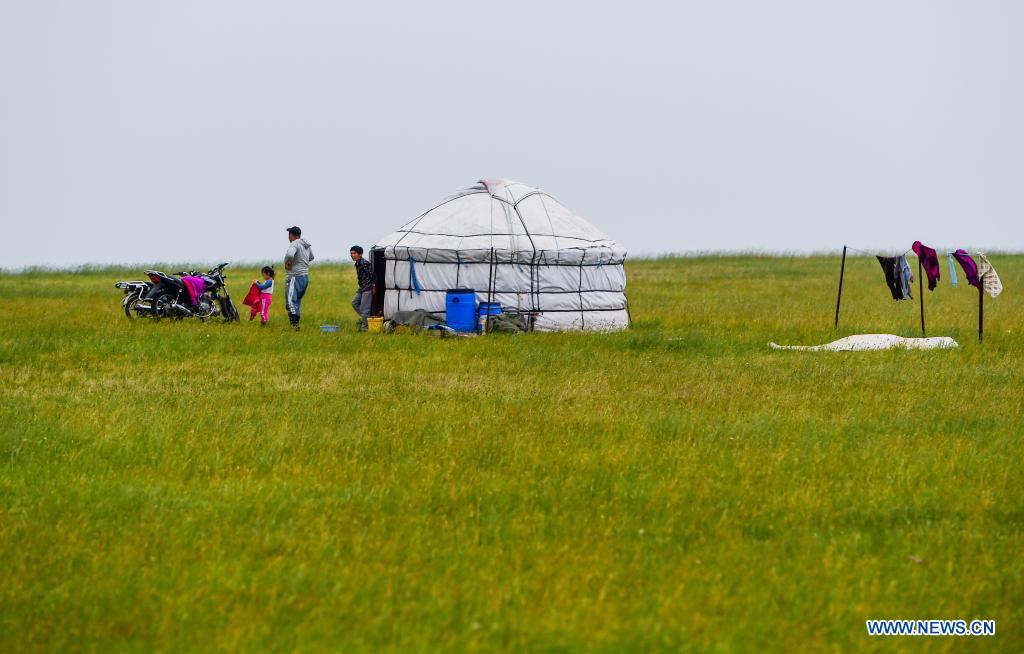
Economic opportunities
These environmental policies are having an increasingly positive effect in limiting the yearly sand transported across China, according to Yu. And, rather than blocking economic opportunities for locals in the area, better protection of these grasslands is actually making local people richer.
Rather than stifling profits, the reduction of land herders can use for grazing has coincided with their incomes increasing, thanks in part to a long-overdue conversion from traditional farming methods to a modern, scientific approach.
One significant change has been the transition of farming imported cattle rather than domestic cattle. With the help of government subsidies, farmers have been able to buy imported cattle from Australia, New Zealand and Ireland, which produce greater amounts of milk compared to domestic cattle, as well as better quality meat, all of which means they are able to sell their product for a higher price. Cattle farmers who used to rear their herds close to Dali Lake but who are now rearing imported cows as part of a farming collective, have seen their annual profits increased by nearly 30,000RMB as a result.
These grasslands, thanks to the management of local authorities rather than individual herdsmen, are also now producing a bigger annual yield, meaning come harvest time, farmers are able to buy the grass to feed their animals from a single authority at a much lower price, with some farms seeing costs dropping by a third.
Diversifying income
And the long-term security of these grasslands has even created a new source of seasonal income for those living in and around them.
Rural tourism – when China’s city dwellers head to the great outdoors to escape the trappings of urban life – has become big business in China, worth over $500 billion according to the Ministry of Culture, and is an area Inner Mongolia is aggressively capitalizing on.
In Abaga banner, over 700 herdsmen are directly profiting from rural tourism by setting up homestays and other tourism service, increasing their annual income by 17,000 yuan. Near Dali Lake, also known as a “paradise for birds”, tourism is also supplementing farmers income, with between 20 to 25 thousand farmers directly and indirectly benefiting from it.
A balance found
Inner Mongolia is unique in China, given that both its development and protection deeply affect not only those living inside the region, but also those outside of it.
And while officials are still trying to find the perfect equilibrium between protection and profit in the area, there are signs that local officials are making positive progress – keeping locals’ incomes intact, providing a defence to surrounding cities, and ensuring it remains a place of stunning heavenly beauty.
 Facebook
Facebook
 Twitter
Twitter
 Linkedin
Linkedin
 Google +
Google +




